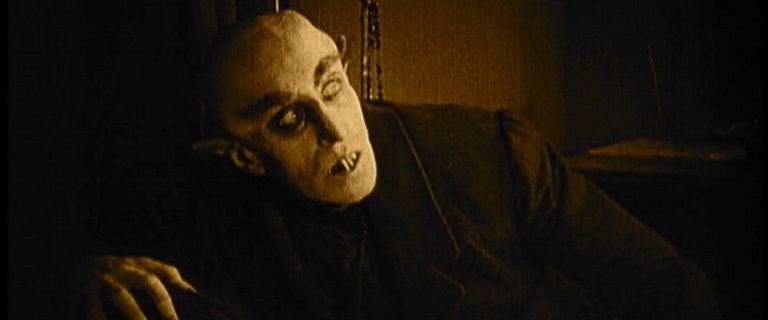
Have you ever heard the word "Vampire" ?
I was reminded of a movie called "NOSFERATU (1992)". In 1838, Thomas Hutter lives in the fictional German city of Wisborg. His employer, Knock, sends Hutter to Transylvania to visit a new client named Count Orlok. Hutter entrusts his loving wife Ellen to his good friend Harding and Harding's sister Annie, before embarking on his long journey. Nearing his destination in the Carpathian Mountains, Hutter stops at an inn for dinner. The locals become frightened by the mere mention of Orlok's name and discourage him from traveling to his castle at night, warning of a werewolf on the prowl.
The next morning, Hutter takes a coach to a high mountain pass, but the coachman declines to take him any further than the bridge as nightfall is approaching. A black-swathed coach appears after Hutter crosses the bridge and the coachman gestures for him to climb aboard. Hutter is welcomed at a castle by Count Orlok. When Hutter is eating dinner and accidentally cuts his thumb, Orlok tries to suck the blood out, but his repulsed guest pulls his hand away.
Hutter wakes up to a deserted castle the morning after and notices fresh punctures on his neck which, in a letter he sends by courier on horseback to be delivered to his devoted wife, he attributes to mosquitoes. That night, Orlok signs the documents to purchase the house across from Hutter's own home in Wisborg and notices a photo of Hutter's wife, remarking that she has a "lovely throat."
Reading a book about vampires that he took from the local inn, Hutter starts to suspect that Orlok is Nosferatu, the "Bird of Death." He cowers in his room as midnight approaches, but there is no way to bar the door. The door opens by itself and Orlok enters, his true nature finally revealed, and Hutter hides under the bed covers and falls unconscious. At the same time this is happening, his wife awakens from her sleep, and in a trance walks towards the balcony and onto the railing. Alarmed, Harding shouts Ellen's name and she faints while he asks for a doctor. After the doctor arrives, she shouts Hutter's name, remaining in the trance and apparently able to see Orlok in his castle threatening her unconscious husband. The doctor believes this trance-like state is due to "blood congestion".
The next day, Hutter explores the castle. In its crypt, he finds the coffin in which Orlok is resting dormant. Hutter becomes horrified and dashes back to his room. Hours later from the window, he sees Orlok piling up coffins on a coach and climbing into the last one before the coach departs. Hutter escapes the castle through the window, but is knocked unconscious by the fall and awakens in a hospital.
When he is sufficiently recovered, he hurries home. Meanwhile, the coffins are shipped down river on a raft. They are transferred to a schooner, but not before one is opened by the crew, revealing a multitude of rats. The sailors on the ship get sick one by one; soon all but the captain and first mate are dead. Suspecting the truth, the first mate goes below to destroy the coffins. However, Orlok awakens and the horrified sailor jumps into the sea. Unaware of his danger, the captain becomes Orlok's latest victim when he ties himself to the wheel. When the ship arrives in Wisborg, Orlok leaves unobserved, carrying one of his coffins, and moves into the house he purchased. The next morning, when the ship is inspected, the captain is found dead. After examining the logbook, the doctors assume they are dealing with the plague. The town is stricken with panic, and people are warned to stay inside.
There are many deaths in the town, which are blamed on the plague. Knock, who had been committed to a psychiatric ward, escapes after murdering the warden. The townspeople give chase, but he eludes them by climbing a roof, then using a scarecrow. Meanwhile, Orlok stares from his window at the sleeping Ellen. Against her husband's wishes, Ellen had read the book he found. The book claims that the way to defeat a vampire is for a woman who is pure in heart to distract the vampire with her beauty all through the night. She opens her window to invite him in, but faints. When Hutter revives her, she sends him to fetch Professor Bulwer. After he leaves, Orlok comes in. He becomes so engrossed drinking her blood that he forgets about the coming day. When a rooster crows, Orlok vanishes in a puff of smoke as he tries to flee. Ellen lives just long enough to be embraced by her grief-stricken husband. The last scene shows Count Orlok's ruined castle in the Carpathian Mountains, symbolizing the end of his reign of terror.
that's what the movie has to say
but in fact
it is about DESEASE and it called PORPHYRIA.

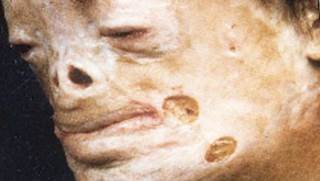
About Porphyria
Porphyria is not a single disease but a group of at least eight disorders that differ considerably from each other. A common feature in all porphyrias is the accumulation in the body of porphyrins or porphyrin precursors. Although these are normal body chemicals, they normally do not accumulate. Precisely which of these chemicals builds up depends on the type of porphyria.
Porphyria is a group of at least eight metabolic disorders that arise as a result of a malfunction in one of the eight steps in the body's synthesis of a complex molecule called heme. Heme is essential for the transport of oxygen to cells in the body. If any step in the synthesis of heme is blocked, an intermediate chemical accumulates in the cell, resulting in oxygen depletion. Those intermediate chemicals, known as porphyrins or porphyrin precursors, are the substances of which heme is composed. There are two general categories of porphyrias, those that affect the skin and those that affect the nervous system. The former are called cutaneous porphyrias. The latter are called acute porphyrias. Because the symptoms of the various porphyrias may resemble symptoms of other disorders, diagnosis may be difficult. Each type of porphyria represents a deficiency of a specific enzyme needed for the synthesis of heme. Treatment is specific to the type of porphyria. The porphyrias are inherited conditions, but don't all follow the same mode of inheritance.
The terms porphyrin and porphyria are derived from the Greek word porphyrus, meaning purple. Urine from some porphyria patients may be reddish in color due to the presence of excess porphyrins and related substances in the urine, and the urine may darken after exposure to light.
The symptoms and treatment vary significantly from one type of Porphyria to the next.
Porphyria symptoms arise mostly from effects on either the nervous system or the skin. Effects on the nervous system occur in the acute porphyrias (AIP, ADP, HCP and VP). Proper diagnosis is often delayed because the symptoms are nonspecific. Skin manifestations can include burning, blistering and scarring of sun-exposed areas.
Risk Factors
In addition to genetic risks, environmental factors may trigger the development of signs and symptoms in porphyria. When exposed to the trigger, your body's demand for heme production increases. This overwhelms the deficient enzyme, setting in motion a process that causes a buildup of porphyrins.
Examples of triggers include:
• Exposure to sunlight
• Certain medications, including hormone drugs
• Recreational drugs
• Dieting or fasting
• Smoking
• Physical stress, such as infections or other illnesses
• Emotional stress
• Alcohol use
• Menstrual hormones ― acute porphyria attacks are rare before puberty and after menopause in women
Signs & Symptoms
based on Subdivisions of Porphyria
*1. Acute Intermittent Porphyria
AIP disrupts the third step in the heme biosynthesis pathway (HBP) and results in the buildup of the porphobilinogen (PGB) metabolite. AIP predominately affects females and occurs after puberty. To date, 120 different mutations have been identified, any of which may lead to a deficiency in the porphobilinogen deaminase (PBGD) enzyme (also called hydroxymethylbilane [HMB] synthase), resulting in the buildup of porphobilinogen. There are 3 types of AIP. In type 1, PBGD activity and enzyme levels fall to about 50%. In type 2, PBGD activity is decreased in non-erythroid cells only. In type 3, structurally abnormal enzymes cause a decrease in enzyme activity. Symptoms include nausea, vomiting, abdominal distension, bowel obstruction, urinary retention, hypertension, peripheral neuropathy, muscle weakness, rapid heartbeat, anxiety, confusion, hallucinations, and seizures.
*2. Variegate Porphyria
VP disrupts the seventh step in the HBP and results in the buildup of the protoporphyrinogen IX metabolite. In South Africa, the R59W mutation is the most prevalent and accounts for about 95% of all cases. This founder gene mutation can be traced back to a Dutch couple who settled at the Cape of Good Hope in 1688. Because of a defect in the protoporphyrinogen oxidase (PPO) enzyme, protoporphyrinogen IX builds up, inhibiting PBGD. Acute attacks may be indistinguishable from PCT and have symptoms similar to both AIP and PCT.
*3. Hereditary Coproporphyria
The large amounts of coproporphyrin present in hereditary coproporphyrin makes the patient sensitive to sunlight, but skin disease is rarely severe in this type of porphyria. Clinically it resembles variegate porphyria except that a larger percentage of affected individuals exhibit few symptoms. Other symptoms are similar to those listed for acute intermittent porphyria.

*4. Protoporphyria
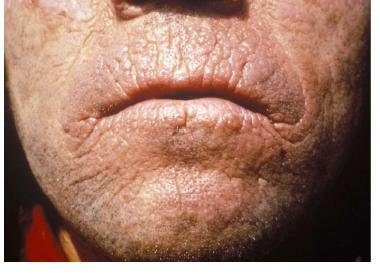
Protoporphyria can have mild to severe light sensitivity and burning on exposure to the sunlight. Usually, the symptoms subside in twelve to twenty-four hours and heal without significant scarring or discoloration to the skin. The skin lesions may also progress to a chronic stage persisting for weeks and healing with a superficial scar. These manifestations generally begin in childhood. They are more severe in the summer and can recur throughout life. Affected skin, at times, exhibits the fragility or blister formation seen in other photosensitizing types of porphyria. Hepatobiliary dysfunction may be associated with significant liver damage.
*5. Porphyria Cutanea Tarda

In porphyria cutanea tarda, exposed skin shows abnormalities similar to those found in variegate porphyria. They range from slight fragility of the skin to persistent scarring and disfiguration. Due to fragility of the skin, minor trauma may induce blister formation. Areas of increased and decreased pigment content may be noted on the skin. Blistering of light exposed skin and increased hair growth, especially on the face, are also characteristic.
*6. Congenital Erythropoietic Porphyria
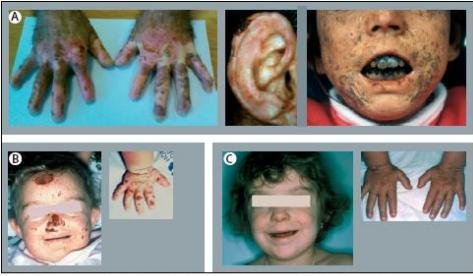
This is a very rare disease with approximately 150 patients reported in the world. congenital erythropoietic porphyria is often manifested shortly after birth with dark urine and sunlight sensitivity causing blistering and skin fragility. Later, brownish, fluorescent teeth, increased hair growth, and pronounced scarring may occur. In some cases, loss of fingers and toes and cartilage from ears or nose may be noted.
*7. ALA-D Porphyria
ADP disrupts the second step in HBP and results in the buildup of the aminolevulinic acid (ALA) metabolite; a defected chromosome 9q34 leads to a deficiency of the delta-aminolevulinic acid dehydratase (ALAD) enzyme needed to convert ALA to PBG. Associated symptoms are similar to AIP. Homozygotes have nearly a complete deficiency in enzyme activity. Heterozygotes have about a 50% deficiency and are not associated with an inherited porphyria. However, heterozygotes are highly susceptible to lead toxicity (presenting with similar symptoms), which is why this type is sometimes referred to as “plumboporphyria.”
Standard Therapies
The basic defect cannot presently be treated, but significant effort is being directed toward treating the underlying mechanisms that cause symptoms. Porphyria is diagnosed through blood, urine, and stool tests.
Some people who are identified as having inherited porphyria do not have symptoms. It is important for those people, as well as for those who have symptoms, to be aware of preventive measures that may help them avoid episodes of porphyria symptoms. These preventive measures include avoidance of certain drugs and alcohol for some types of porphyria. For some people, they may also include avoidance of exposure to sunlight because sun sensitivity can occur with some types of porphyria. More specific information on these preventive measures is available from the American Porphyria Foundation.
Hope you enjoy this little article
Thanks for your time and please don't forget to upvote this article, i really apreciate you guys and i will upvote your article too as soon as possible
Refrences From The Internet
http://www.porphyriafoundation.com/about-porphyria
http://www.porphyriafoundation.com/about-porphyria/history-of-porphyria
http://www.medicalbag.com/profile-in-rare-diseases/porphyria/article/472320/
https://en.wikipedia.org/wiki/Nosferatu
https://www.rogerebert.com/reviews/great-movie-nosferatu-1922
https://en.wikipedia.org/wiki/Porphyria
https://www.mayoclinic.org/diseases-conditions/porphyria/symptoms-causes/syc-20356066
http://www.clinicaladvisor.com/gastroenterology-hepatology/chronic-cutaneous-porphyrias/article/596767/
Pictures Source
PCT skin manifestations. (From Sarkany RPE. Making sense of the porphyrias. Photodermatol Photoimmunol Photomed 2008;4:102-8.)
HEP skin lesions. (From Puy H, Gouya L, Deyback J-C. Porphyrias. Lancet 2010;375:924-37.)
CEP skin lesions (Gunther's disease): A) severe presentation in adults; B) severe presentation in a newborn before; and C) 2 years after bone marrow transplantation with persistence of erythrodontia. (From Puy H, Gouya L, Deyback J-C. Porphyrias. Lancet 2010;375:924-37.)
Acute photosensitivity reaction in EPP. (From Lecha M, Puy H, Deybach J-C. Erythropoietic protoporphyria. Orphanet J Rare Dis 2009;4:19.)
Chronic skin lesions of EPP. (From Lecha M, Puy H, Deybach JC. Erythropoietic protoporphyria. Orphanet J Rare Dis 2009;4:19.)
Porphyrias are a heterogeneous group of metabolic diseases.
My question. Is hereditary?
Thanks for sharing
hi @blanca56
thanks before
based on some reliable medical sites, yes Signs and symptoms of porphyria vary, depending on the specific type and severity. And yes Porphyria is usually inherited — one or both parents pass along an abnormal gene to their child.
Hi. I am @greetbot - a bot that uses AI to look for newbies who write good content!
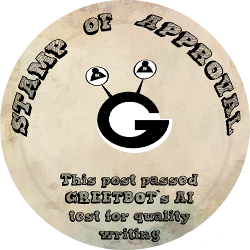
Your post was approved by me. As reward it will be resteemed by a resteeming service.
Resteemed by @resteembot! Good Luck!
The resteem was paid by @greetbot
Curious?
The @resteembot's introduction post
Get more from @resteembot with the #resteembotsentme initiative
Check out the great posts I already resteemed.